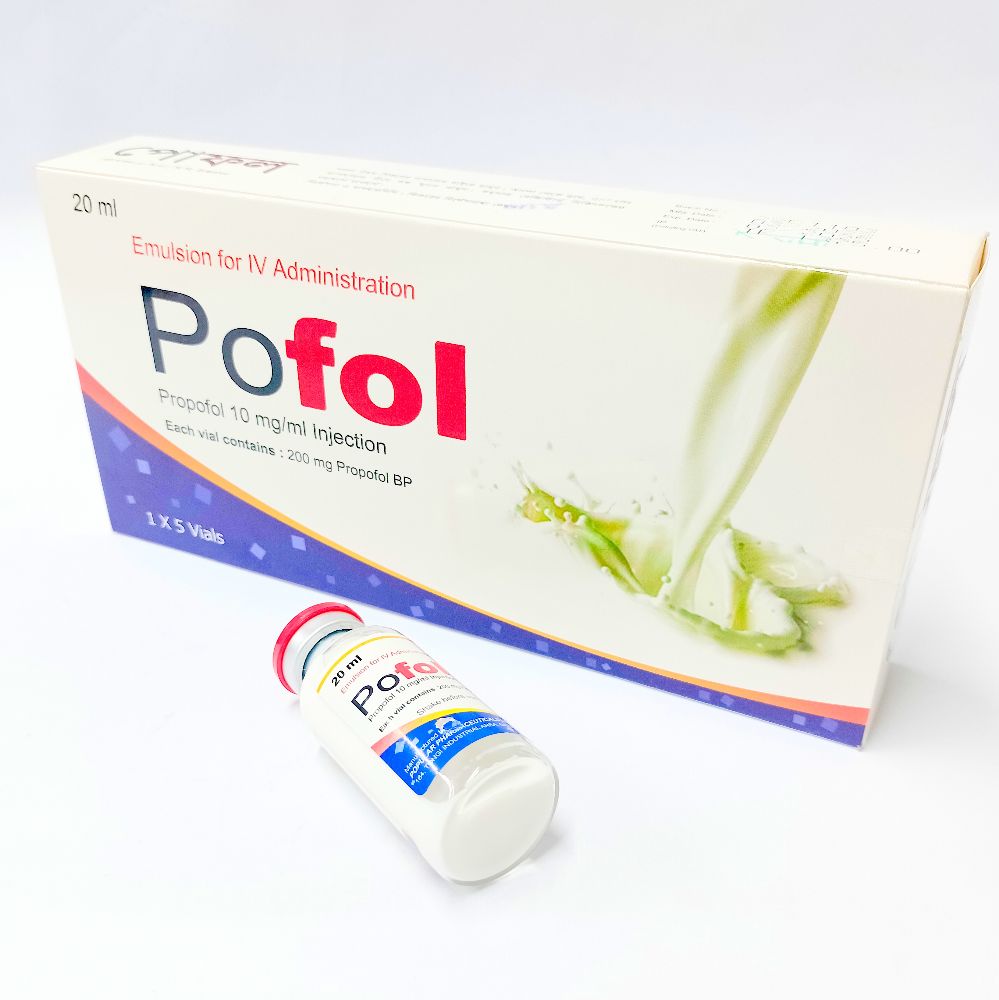
Type:20ml vial
Generic Name:Propofol
Manufacturer:Popular Pharmaceuticals Ltd.
Price:৳275.00
General anaesthesia, Sedation
Intravenous Induction and maintenance of general anaesthesia Adult: Induction: 40 mg by inj or infusion every 10 sec. Usual dose: 1.5-2.5 mg/kg. Maintenance: 4-12 mg/kg/hr or intermittent bolus inj of 20-50 mg. Elderly: Including neurosurgical and debilitated patients: Infuse at a rate of 20 mg every 10 sec. Maintenance: 3-6 mg/kg/hr. Usual dose needed: 1-1.5 mg/kg. Sedation Adult: In diagnostic and surgical procedures: Initially, 6-9 mg/kg/hr by infusion given for 3-5 minutes or an alternative dose of 0.5-1 mg/kg by slow inj over 1-5 minutes. Maintenance: 1.5-4.5 mg/kg/hr infusion. Reduce maintenance dose by 20% for high-risk patients needing sedation. For ventilated patients: 0.3-4 mg/kg/hr by infusion. Monitor lipid concentrations if duration of sedation lasts >3 days.
Intravenous Anesthesia Induction 3-16 years: 2.5-3.5 mg/kg IVP over 20-30 sec Maintenance 2 months to 16 years: 0.125-0.3 mg/kg/min IV
Electroconvulsive therapy, obstetrics. Sedation in children <16 yr. Pregnancy, lactation.
Short-acting, lipophilic sedative/hypnotic; causes global CNS depression, presumably through agonist actions on GABAa receptors.
Paediatrics, elderly, hypovolaemia, epilepsy, lipid disorders, patients with increased intracranial pressure. Avoid rapid bolus doses in high risk patients. Emulsion formulation of propofol 2% should only be used in children >3 yr. Lactation: Excreted in breast milk; effect on nursing infant not known
>10% Hypotension (peds 17%; adults 3-26%),Apnea lasting 30-60 sec (peds 10%; adults 24%),Apnea lasting >60 sec (peds 5%; adults 12%),Movement (peds 17%; adults 3-10%),Injection site burning/stinging/pain (peds 10%; adults 18%) 1-10% Respiratory acidosis during weaning (3-10%),Hypertriglyceridemia (3-10%),Hypertension (peds 8%),Rash (peds 5%; adults 1-3%),Pruritus (1-3%),Arrhythmia (1-3%),Bradycardia (1-3%),Cardiac output decreased (1-3%; concurrent opioid use increases incidence).Tachycardia (1-3%) <1% Arterial hypotension,Anaphylaxis,Asystole,Bronchospasm,Cardiac arrest,Seizures,Opisthotic rxn,Pancreatitis,Pulmonary edema,Phlebitis,Thrombosis,Renal tubular toxicity Potentially Fatal: Apnoea, bradycardia, hypotension, convulsions; anaphylaxis.
Reduce dose if given with nitrous oxide or halogenated anaesthetics. Increased sedative, anaesthetic and cardiorespiratory effects when used with other CNS depressants.